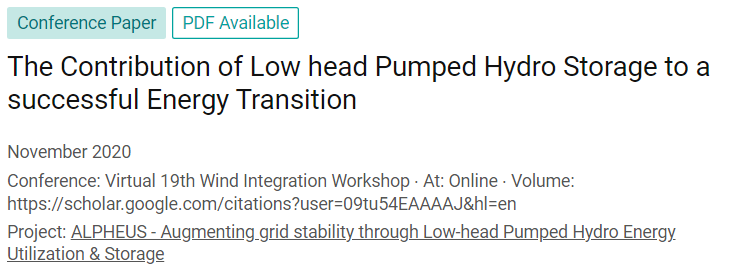Publication: The Contribution of Low Head Pumped Hydro Storage to a Successful Energy Transition (PDF now available)

The pan-European power grid is experiencing an increasing penetration of Variable Renewable Energy (VRE). The fluctuating and non-dispatchable nature of VRE hinders them in providing the Ancillary Service (AS) needed for the reliability and stability of the grid. Today’s grid is reliant on synchronous generators. In case of sudden frequency deviations, the inertia of their rotating masses contributes significantly to the stabilisation of the system. However, as the modern power grid is gravitating towards an inverter-dominated system, these must also be able to replicate this characteristic.
Therefore, Energy Storage Systems (ESS) are needed along the VRE. Among the different ESS, Pumped Hydro Storage (PHS) can be identified as particularly convenient, given its cost-effective implementation and considerable lifespan, in comparison to other technologies. PHS is reliant on difference in altitudes, which makes this technology only available if suitable topographic conditions exist.
The ALPHEUS project will introduce a low-head PHS for a relatively flat topography. In this paper, a grid-forming controlled inverter coupled with low-head PHS that can contribute to the grid stability is introduced, emphasising its ability to provide different AS, especially frequency control, through the provision of synthetic system inertia, as well as fast Frequency Containment Reserves (fFCR).
Read the full text and download the publication on ResearchGate

